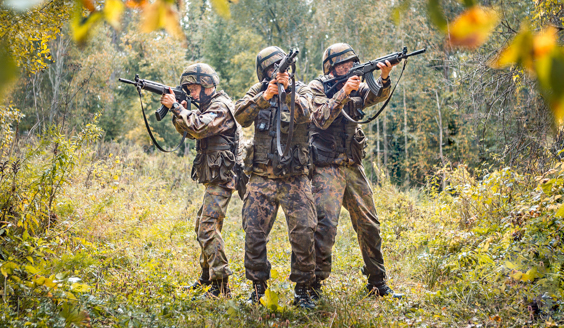Armén försvarar hela rikets landområde och genomför alla uppgifter som försvarsmakten har.
Försvaret av hela riket utgår från den omfattande reserven som produceras genom värnplikten. Vid arméns åtta truppförband utbildas årligen ungefär 20 000 beväringar och kvinnor som fullgör frivillig militärtjänst. Vid repetitionsövningarna som upprätthåller reservens kunnande och kompetens utbildas årligen tusentals reservister.
Armén stöder det övriga samhället genom att årligen ge handräckning över 400 gånger till de andra myndigheterna.
Armén leder huvuddelen av försvarsmaktens internationella militära krishanteringsoperationer och utbildar samt utrustar de trupper som sänds till krishanteringsuppdrag.
Arméns krigstida trupper 180 000 soldater
Operativa trupper
- Krävande mobila stridsuppgifter över hela landet
- Välutrustade
- Insatsinriktade
Territoriella trupper
- Orsaka förluster för motståndaren, kontrollera områden (det förnyade stridssättet)
- Utrustning enligt uppgift
- De viktigaste områdena
Lokaltrupper
- Skyddar objekt, ställer upp trupper, samarbetar med olika myndigheter
- Lätt utrustning
- Finns över hela landet

